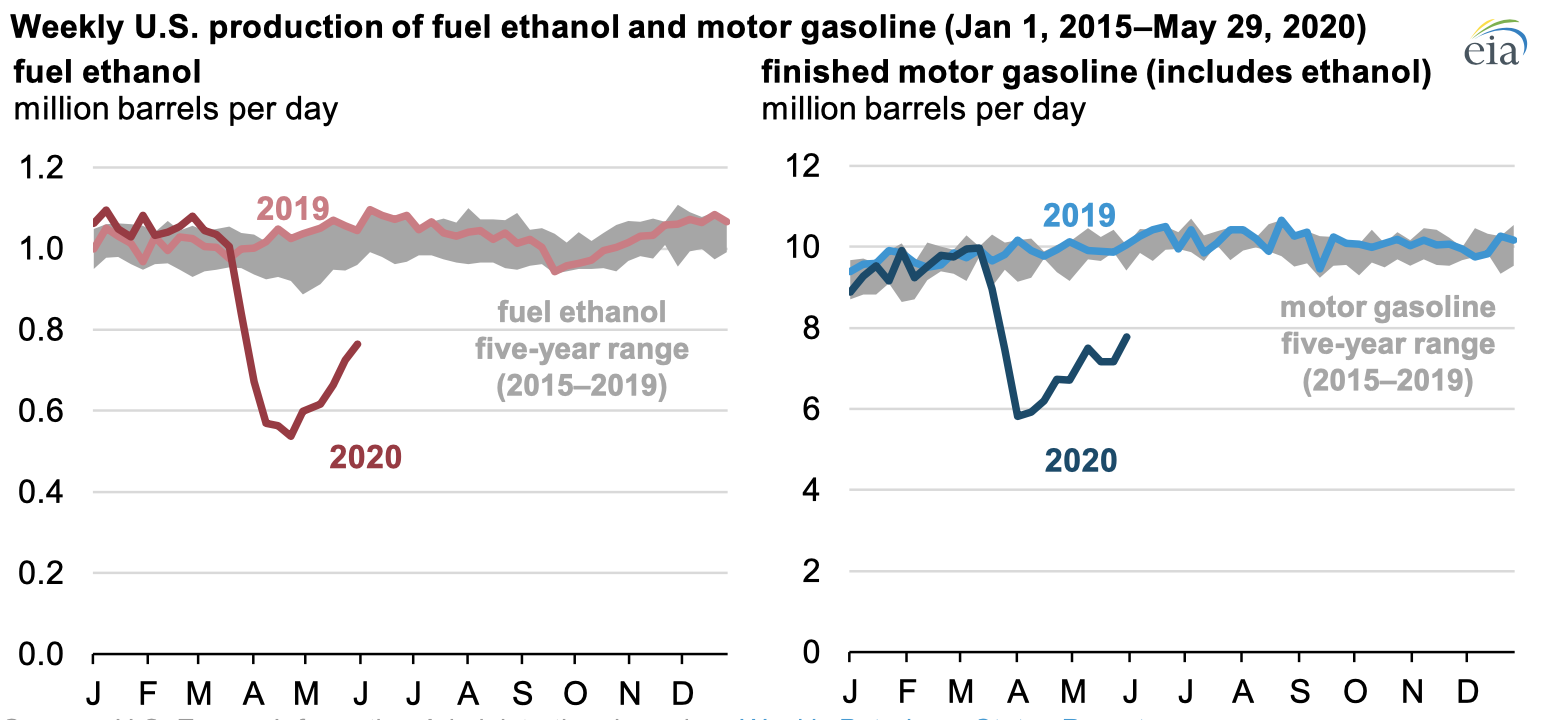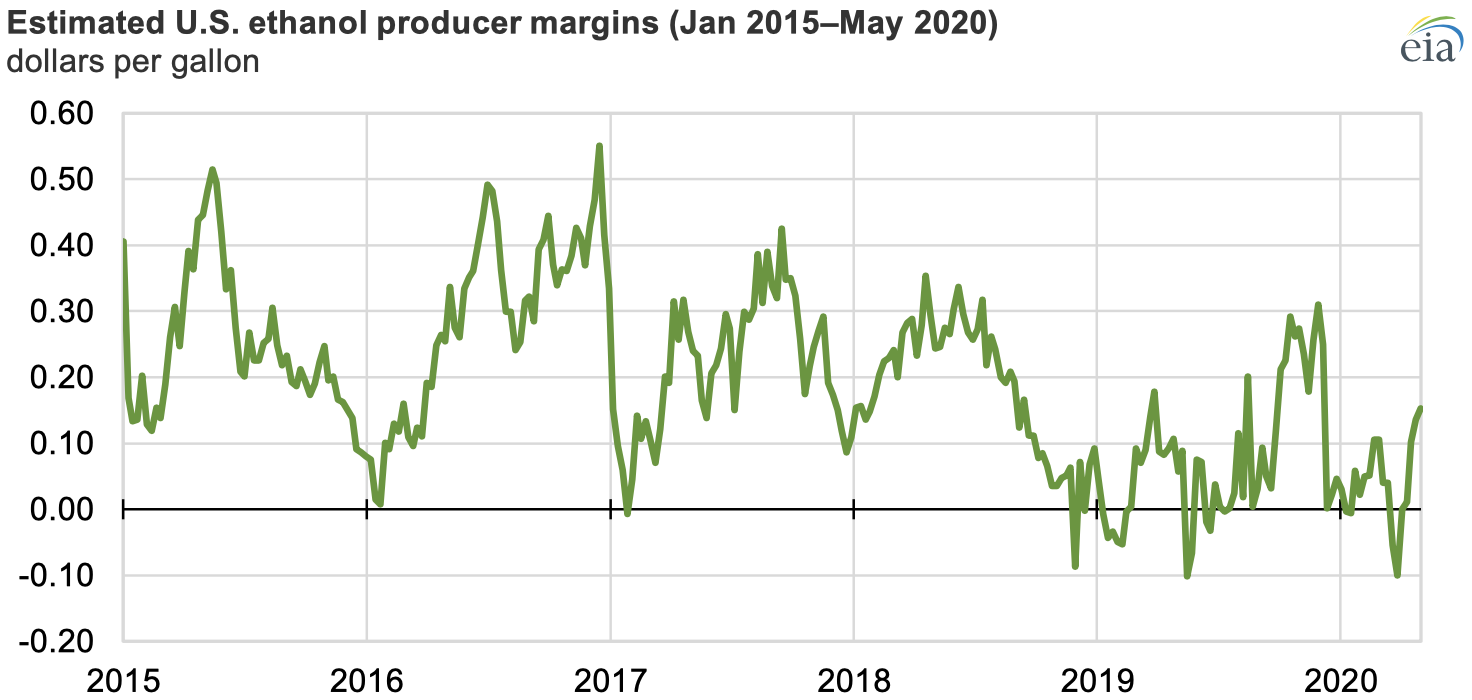U.S. fuel ethanol production fell dramatically during late March and in April 2020, driven by significant reductions in motor gasoline demand as a result of mitigation efforts for the 2019 novel coronavirus disease (COVID-19). Fuel ethanol production fell to 537,000 barrels per day (b/d) in the week ending April 24, which was the lowest level on record since June 2010, when the U.S. Energy Information Administration (EIA) began collecting weekly fuel ethanol production data. Because almost all finished motor gasoline sold in the United States is blended with 10% ethanol (E10), the drop in gasoline demand has driven similar decreases in fuel ethanol demand and, correspondingly, fuel ethanol production.

” src=”https://www.ajot.com/images/uploads/article/eia-us-ethenol-oroduction-06092020-2.png”>

Sharp reductions in motor gasoline blending demand reduced already weak fuel ethanol operating margins, leading many plants to suspend operations entirely or significantly reduce output. Press reports indicate that nearly 30% of the nation’s fuel ethanol plants have been idled since early March, while another 35% have reduced production.
EIA’s weekly fuel ethanol production data show that U.S. fuel ethanol output averaged 586,000 b/d for the four weeks ending April 24, 2020, 43% less than the average of the four weeks ending April 26 of last year, largely matching the decrease in weekly motor gasoline product supplied over the same period. However, because supply still exceeded demand, fuel ethanol inventories increased to record-high levels in April. Total motor gasoline inventories also hit record highs in April.

Before country-wide mitigation efforts were implemented in response to COVID-19, fuel ethanol inventories were already trending at some of their highest seasonal levels in early 2020 because of relatively flat U.S. gasoline demand and limited domestic fuel ethanol demand growth beyond E10. U.S. fuel ethanol inventories reached an all-time record level of 27.7 million barrels during the week ending April 17, which was 22% higher than at the same time last year. As gasoline demand has begun to gradually recover, fuel ethanol inventory levels decreased to 22.5 million barrels for the week ending May 29, similar to their value in late May 2019.

The sharp reductions to demand and all-time record inventories have led to estimated U.S. fuel ethanol producer margins briefly going negative in March. Estimated fuel ethanol margins were negative as recently as 2019 because of rising corn prices and high fuel ethanol inventory levels. Negative fuel ethanol producer margins in March 2020 drove many fuel ethanol production facilities to have to idle or shut down production capacity, driving the record-low production rates in April.
In its latest Short-Term Energy Outlook, EIA forecasts that U.S. fuel ethanol production will average 0.87 million barrels per day (b/d) in 2020, about 15% lower than the 2019 average. EIA expects fuel ethanol margins to gradually increase, but lower U.S. motor gasoline demand will keep fuel ethanol production levels lower than 2019 levels in 2020. EIA forecasts that U.S. fuel ethanol production will increase in 2021 to reach an average of 0.97 million b/d.
Principal contributors: Sean Hill, Estella Shi









